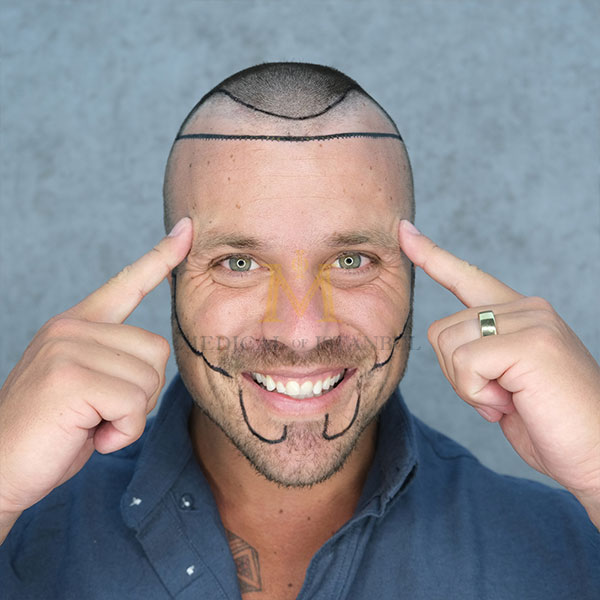Beard is one of the most important aspects of men’s appearance. It is important for men to have a smooth, dense and full beard in terms of appearance.
People who have a beard transplant process usually experience discomfort. In general, this is not seen as a problem in people who have no beard at all. The beard also increases self-confidence because it appears as the outer make-up of some people. People can live a healthy life without beards. However, men attach great importance to beard models because they are both an indicator of masculinity and a part of their external appearance. With the advancement of technology, it has been possible to get a successful result in beard transplantation for people with sparse beard areas or corners.
In beard transplantation, the recovery process is faster due to the high blood circulation on the face. As a result, the beard result usually occurs more quickly.
Beard transplantation is a cosmetic surgical procedure that involves taking hair follicles from a donor area, usually from the back of the head, and transplanting them into the beard area. This is typically done for men who have sparse or patchy beard growth or who are unable to grow a beard at all.

The procedure involves the following steps:
Anesthesia
The patient is given local anesthesia to numb the donor and recipient areas.
Donor Hair Extraction
Hair follicles are extracted from the donor area using a specialized punch tool. The extracted hair follicles are typically taken from the back of the head, where hair growth is usually the thickest.
Preparation of the Recipient Area
The recipient area is cleaned and prepared for the hair transplantation procedure.
Hair Transplantation
Hair follicles are transplanted into the recipient area using a special tool. The transplanted hairs are placed at a specific angle to ensure a natural-looking result.
Postoperative Care
After the procedure, the patient is given specific instructions on how to care for the transplanted hair and prevent infection.
The recovery period for beard transplantation typically takes about 10 to 14 days, during which time the transplanted hairs may fall out. However, new hair growth should begin within a few months, and full results may take up to a year to be fully realized. The success of the procedure depends on factors such as the skill of the surgeon, the quality of the donor hair, and the patient’s overall health.
After Beard & Mustache Transplantation
The face should not be washed for the first 24 to 48 hours after the hair follicles are transplanted. In addition, it is possible that small acne-like red dots will occur 2-3 days after mustache or beard transplantation, and these will disappear spontaneously in a period of 1 week without the need for any treatment. It is possible to optionally shorten the beard and mustache with scissors after 10 days, which have started to grow from the moment they are planted, but the first shave should be done at the end of the 30-day period that will allow the hair follicles to fully adhere.
After a beard and mustache transplantation, it’s important to follow post-operative care instructions to ensure proper healing and optimal results. Here are some general guidelines:
- Avoid touching the transplanted area for at least 48 hours after the procedure.
- Avoid shaving or trimming the transplanted hair for at least four weeks after the procedure.
- Avoid strenuous physical activity, swimming, and exposure to direct sunlight for at least a month after the procedure.
- Use a clean pillowcase and avoid sleeping on your stomach for the first 10 nights after the procedure.
- Follow any medication instructions provided by your surgeon, such as antibiotics or pain medication.
- Avoid smoking, as it can impair healing and increase the risk of complications.
- Keep the transplanted area clean and dry, and avoid using harsh chemicals or abrasive scrubs on the area.
- Attend any follow-up appointments scheduled by your surgeon to monitor healing and ensure optimal results.
It’s important to note that individual post-operative care instructions may vary based on the specific details of your procedure and your surgeon’s recommendations. Be sure to follow your surgeon’s instructions carefully to ensure the best possible results.

